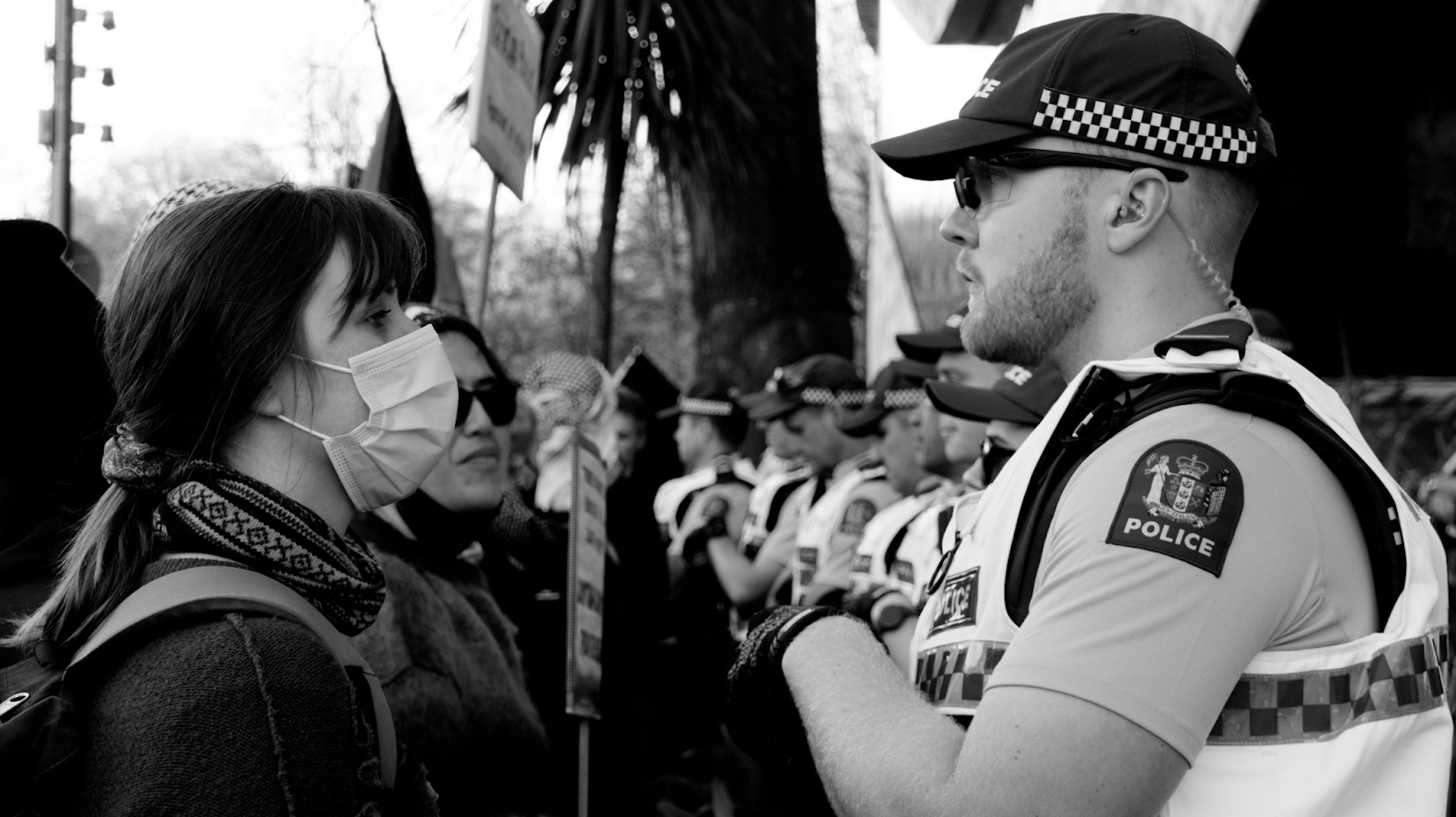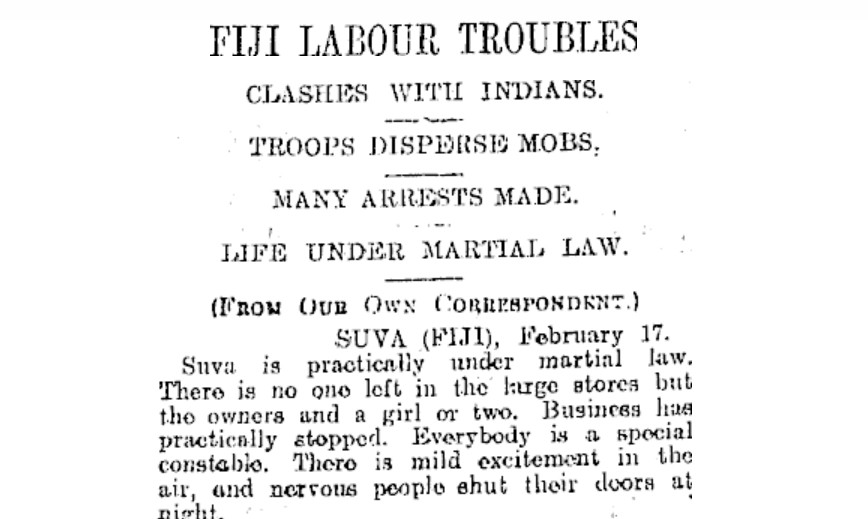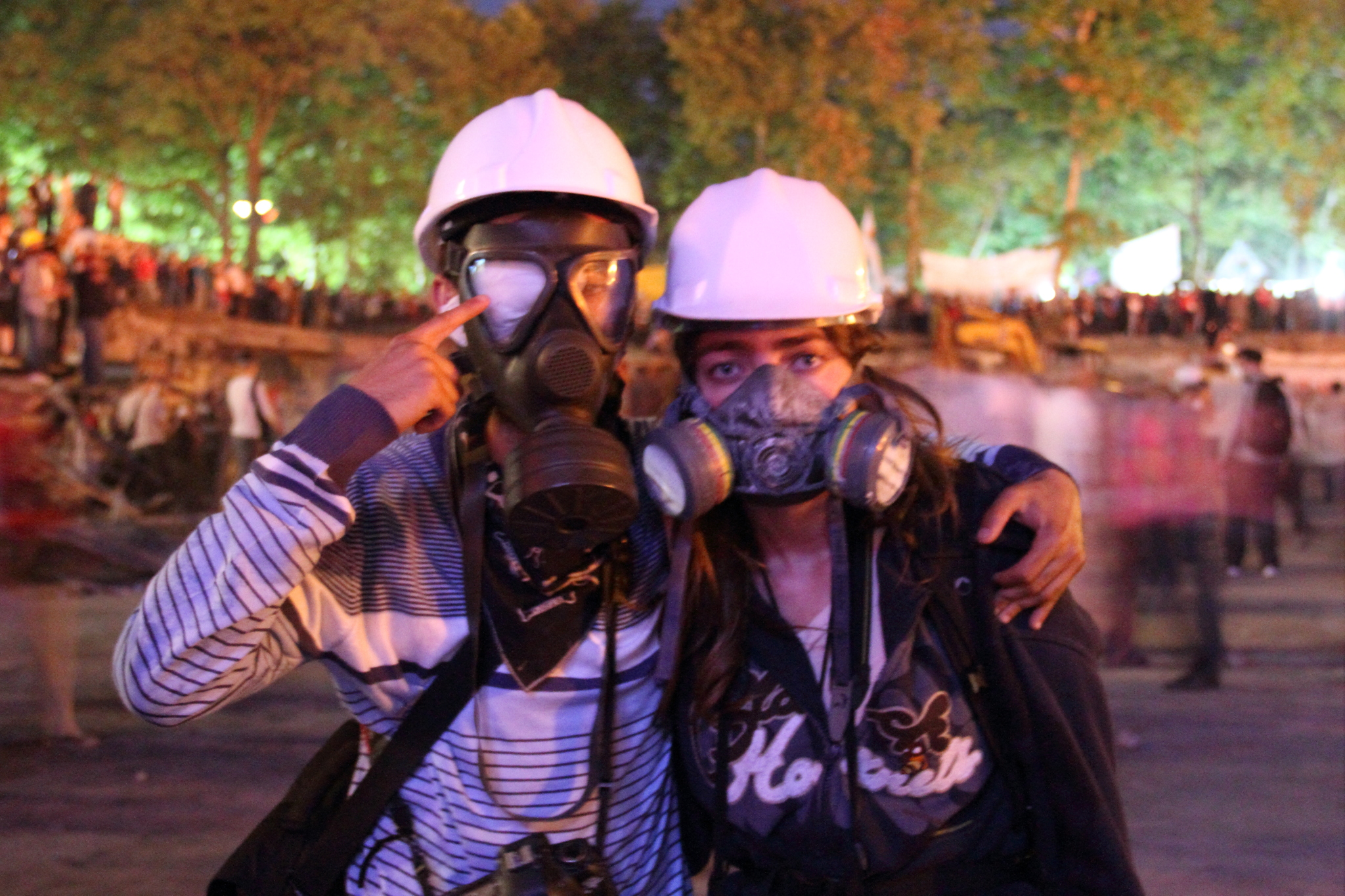Tama Te Kapua Poata [Ngāti Porou; 1936 – 2005] was born in Tokomaru Bay, on the East Coast. He represents the generation of Māori who migrated into the cities, and continued on to become leaders and fighters in the vanguard of the working class. He was part of all the key struggles of the ‘Māori renaissance’ of the 60s and 70s. He saw the struggle for socialism as synonymous with the struggle for Māori sovereignty.
Poata’s memoir is filled with anecdotes, poems, stories, photos, old newsletters from the struggle and campaigns that he was involved in and led over three decades. As a communist, he was on the front lines of and often the face of struggles that shaped New Zealand from the industrial struggles of the 60s – 70s, to anti-Vietnam war protests, to the Land March of 1975, to antiapartheid protests against the Springbok tour in 1981, and more. So prominent was his activism that it even caught the eye of former Prime Minister Robert Muldoon who accused him of being New Zealand’s “leading Māori communist”. Poata had actually been expelled from the Communist Party close to a decade earlier.
This memoir is a must read. Behind its conversational tone is a goldmine of insights and experiences, and shows how quickly ideas and assumptions can change in a time of social upheaval and class struggle. There are countless examples of how seemingly fixed ideas like racism can be overcome through the course of the struggle.
Changing consciousness at Roxburgh Hydro Dam
An example of how quickly assumptions and attitudes can change is Poata’s own initial reaction to the union at the Roxburgh hydro-electric dam, where he worked in the 1960s. Six weeks after Poata began work at Roxburgh Dam, the union went out on strike to support a sacked crane driver. He writes, “I hadn’t been aware of strikes or what they meant … at first it sounded ludicrous that 2000 men would go on strike for one person”. He goes on to explain that this strike, however, was a “major turning point for me” and that he began to understand what unionism was about. By witnessing the union’s practical solidarity Poata began to understand that only through “collective support could the individual have some safety”. He goes on to detail this practical solidarity in the form of “hunting parties”; “truckloads of rabbits, hundreds and hundreds arrived. People were skinning them for the strikers and meat and vegetables began to arrive from other unions.”
His experience at the Roxburgh Dam would stay with him for life. He reflected that it “led me to understand the impossibility of divorcing yourself from class politics. I learnt that you are born into politics and whatever physical or mental gymnastics you adopt to escape this fundamental truth are to no avail.”
Roxburgh Dam was also where he met waterside workers who had been locked out by the government in 1951, and heard their stories of betrayal and hardship. He learnt the extent to which the government was willing to go to smash the union. It was illegal to show any support for the waterside workers – even food parcels for the strikers were seen as an act of solidarity punishable by the law. He saw the power of resilience and solidarity too: these men were still holding and pulling out their ‘loyalty cards’ showing that they had stuck with the union and its battle.
Socialism and Māori self-determination
Roxburgh was also where he met communists and socialists who introduced him to the ideas of Karl Marx. His thoughts and reflections of this time also connect his socialist politics to his lifelong commitment to Māori self-determination. He writes, “when I read about social conditions, socialism and communism I realized it was basically the way it was back at Tokomaru Bay. We all helped each other and no child was ever alone. The people at Roxburgh Dam were talking about socialism, and supporting each other, and other unions were sending in support to a group working way out in the middle of nowhere at Roxburgh… It was my introduction to socialism and social conditions, and how people helping each other could actually win”. For Poata, struggle forced him to reevaluate his own attitudes towards strikes and workers. Just as importantly, in the course of a common fight against the bosses, he was able to make connections to how tangata whenua could win against the state. “It was obvious,” Poata writes, “that the left of centre was more in line with the social and tribal aspirations of my people. Māori needed to fight collectively for our own rights as tangata whenua, not go cap in hand to successive governments. To beg for whatever crumbs were on offer from the wealthy man’s table was demeaning.”
Drivers’ Union
After Roxburgh, Poata continued to play a leading role this time in the Drivers’ Union, a union known for its militancy and communist leanings. The Drivers’ Union tackled a wide range of social issues outside of immediate work questions such as domestic violence, alcoholism, housing, Vietnam and apartheid. Unions have and continue to take a stand against or show solidarity for other social justice campaigns.
The establishment of the Māori Organisation of Human Rights (MOOHR) is a case in point. A predecessor to the radical Ngā Tamatoa, MOOHR was established when Māori drivers in Poata’s union came to him to raise concerns about an Act that involved further Māori alienation from land. Poata and his comrades were able to argue to a thousand drivers at a stop work meeting in the Wellington suburb Newtown, “Maori issues were something that should be addressed by ourselves as trade unionists and Māori drivers in the union.” As a result, the Drivers’ Union was the first union to make submissions to the Parliamentary Select Committee on a specific Māori issue.
I mentioned earlier that Poata was expelled from the Communist Party in 1970. He wasn’t alone – the whole Wellington branch of the CP was expelled en masse. Poata had also begun to draw his own conclusions about the CP by this stage. The CP had many fine and dedicated militants in its ranks, but its Stalinist politics and brittle, unimaginative leadership meant it could not satisfy the intellectual curiosity and political drive of someone with Poata’s talents. He disagreed with “senseless sloganeering” of the CP which meant “nothing if you didn’t actually know how to implement [them]”. He also came to the conclusion that, “the only ones who could unite or who knew how to physically do anything positive as a vanguard of the working class were the Māori.” He realises from his own experience that “Māori people were actually doing things in their own way to fight for socialist rights. In our own tribalism we were socialists fighting for each other and for other tribes.”
He turned away from ‘driving a foreign ideology’ and toward immersing himself in the oncoming land battles against corporate interests and the state in the mid-1970s onwards. It’s tantalizing to wonder – although this can only be speculation – what history might have held had Poata come into contact with the living traditions of revolutionary Marxism, free of its Stalinist distortions in the CP. In reality, however, he struck out on his own, keeping his socialist principles intact.
What’s impressive about this memoir is the honesty with which he writes about the debates within the movement, within iwi and hapū as the struggle was taking place. He certainly does not shy away from criticizing ‘the brown fatcat’, whom he attacks:
“many of these had snuggled up to their government masters and some of these had been entrusted as advisers to the government.”
Grassroots people in the 1975 Land March
This honesty is also evident in his account of the historic 1975 land march. Whina Cooper led a hīkoi with 6000 other people against Māori alienation from their land. In a new and distinct form of struggle, the hīkoi walked the length of the North Island beginning from the top in Te Hāpua and ending in Wellington. Poata notes, “while the march was led by the elders, it was carried and sustained by the young Ngā Tamatoa and MOOHR members,”. This distinction became important at the crossing of the Auckland Harbour Bridge. Authorities wanted marchers to go around the long route to bypass the bridge but “we decided that if the march wanted to go the long way around, we would endeavor to rally up as much support as we could and take on the bridge ourselves regardless of the leadership.”
This astute tactical and strategic decision also indicates Poata’s politics and who he was trying to orient to: the “ordinary grassroots people”. Rather than asking the question of whether the Land March favoured Labour or National, Poata assessed the situation based on class. He writes, “the bulk of the march supporters were ordinary grassroots people concerned about issues affecting Māori in this country. The Labour Party, in its opposition to the Māori land march was opposing the grassroots feeling at the same time and was unable to read the conditions correctly.” He reiterates this point elsewhere. Even though the land march was lead by Whina Cooper, a National Party supporter, “the bulk of the Māori land march were grassroots people from all walks of life, from all creeds, all races, and all political affiliations … It will go down in history that they [the Labour Party] opposed it.”
Women and struggle
Class, social and Māori issues were intertwined for Poata. Another example of this is Poata’s views on the right of women to speak on marae. He protested against Te Herenga Waka marae at Victoria University of Wellington for not allowing women to speak. Poata argued to the VUW Marae committee in 1985 that “it was insulting and humiliating for Ngāti Porou women to go to university and witness non-Māori men, who were often not fluent in te reo, speak on the paepae, while they themselves could not.” He goes on to argue, “Victoria University’s marae is part of a Pākeha educational institution; it’s not a historic marae.” Poata links this refusal to allow women to speak to “the stubbornness of male supremacy [which] has not yet conceded women’s equality with men. It makes a wry study to witness the twisting and turning with false rhetoric simply to maintain male domination in this arena of university curriculum … escape behind the face of ‘culture’ will no longer permit this phony argument to survive.”
Poata had utmost respect for Māori women like Whina Cooper for her role in the 1975 Land March, Eva Rickard, who fought against the Raglan golf course, and Saana Murray, who protested against Māori land alienation up North. All these women he attributes to the “mothers and guardians of our race and culture. Ages of struggle from these women and others like them have held our culture together. Against all odds and the pressure of raising their families our whaea and kuia have held fast … We must celebrate the strength of Māori women who have nursed our people and culture to enjoy our survival to this present day.”
The memoir goes on to cover many other aspects of Poata’s enormously busy and productive life – his involvement in the anti-Springbok tour, his work as a film-maker to make the highly acclaimed film Ngati, his work on Treaty claims, his love of hunting and fishing. One review cannot do justice to such a multifaceted, complex and energetic life. Here I have drawn out some strands of the links between the fight for tino rangatiratanga and socialism. There is much more to read about – and to discover the world of Tama Poata, buy, read, and share Poata: Seeing Beyond the Horizon.









